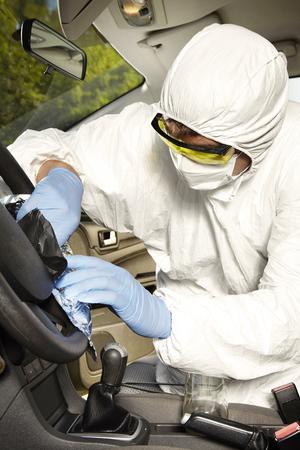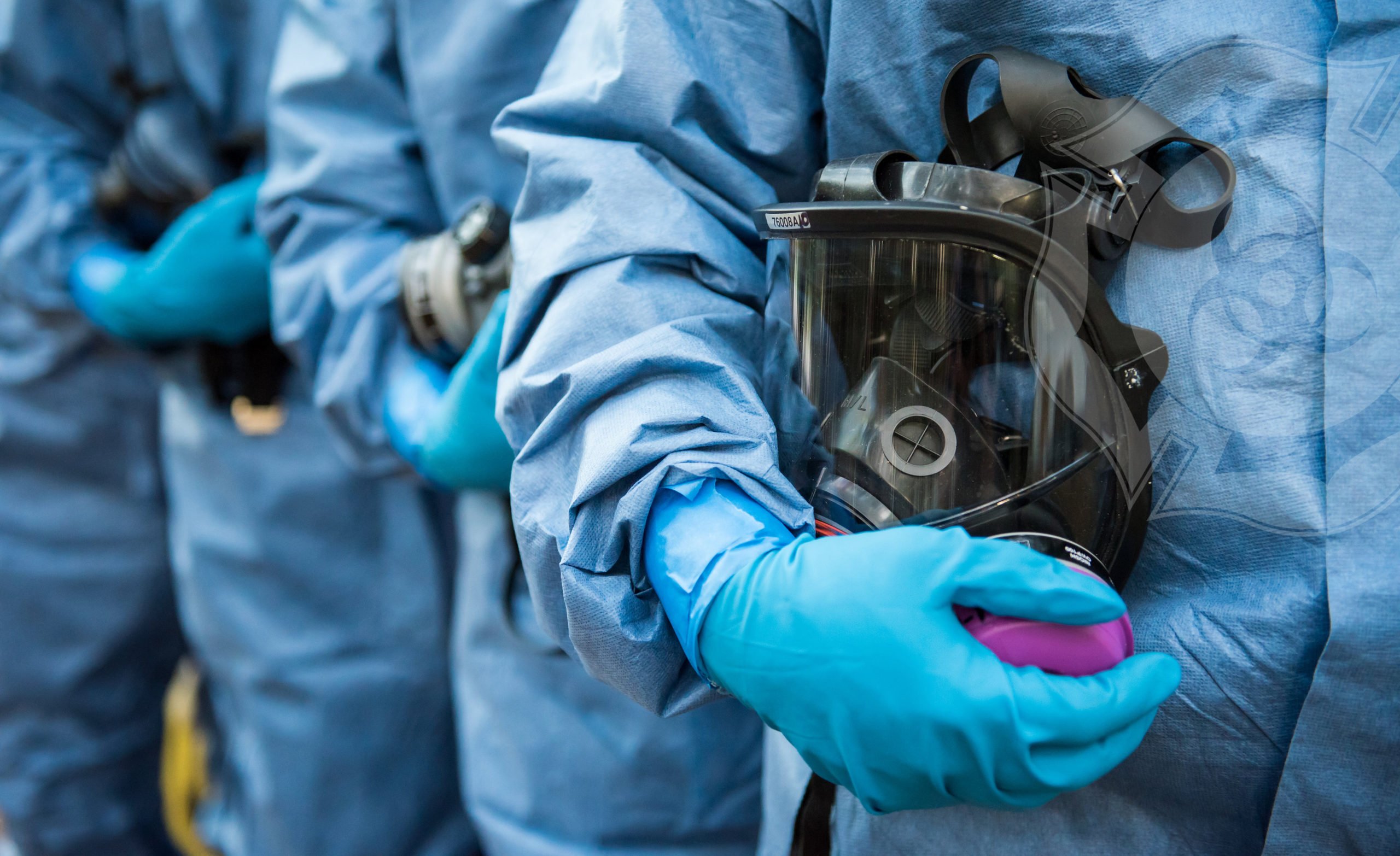Professional Homicide and Suicide Cleanup: Compassionate and Discreet Services
Professional Homicide and Suicide Cleanup: Compassionate and Discreet Services
Blog Article
Professional Biohazard Cleaning and Decontamination for Blood, Bodily Fluids, and Hazardous Materials
The possible health dangers connected with direct exposure to biohazards highlight the essential need for thorough handling and detailed cleaning. As we navigate the detailed landscape of biohazard cleanup, recognizing the subtleties of regulations, compliance, and the customized tools at play comes to be important in making sure a safe and comprehensive decontamination process.
Wellness Threats of Biohazard Direct Exposure
Exposure to biohazards poses significant health and wellness threats that can cause severe effects for individuals and neighborhoods alike. Biohazards incorporate a large range of organic compounds, including blood, bodily liquids, mold and mildew, bacteria, viruses, and various other potentially contagious materials. When people come into contact with these biohazards, whether via crashes, incorrect handling, or environmental exposure, they face the risk of having serious illnesses or illness.
Among the primary health threats connected with biohazard direct exposure is the transmission of transmittable illness. Bloodborne microorganisms such as HIV, hepatitis B and C, and numerous microorganisms can be present in biohazardous materials, posturing a straight threat to human wellness. Breathing in air-borne biohazards like mold spores or coming right into call with contaminated surface areas can likewise result in respiratory concerns, allergies, and various other adverse health and wellness effects.
In addition, biohazard direct exposure can have long-term wellness effects, with some diseases manifesting years after the initial get in touch with (Blood Cleanup). As a result, it is important to focus on appropriate biohazard cleaning and purification to reduce these wellness dangers and guarantee the security of people and neighborhoods

Specialized Educating for Biohazard Cleanup
When it concerns dealing with biohazard cleanup successfully and safely, specialized training plays an essential duty in making certain appropriate decontamination treatments are adhered to. Biohazard cleanup needs details understanding and abilities to successfully reduce threats connected with bloodborne microorganisms, bodily fluids, and harmful products. Professionals learnt biohazard clean-up undergo strenuous direction on how to safely handle, eliminate, and deal with biohazardous products to avoid contamination and exposure.
Specialized training for biohazard clean-up covers a series of essential subjects, consisting of proper personal protective equipment (PPE) usage, bloodborne pathogen awareness, purification strategies, and contaminated materials disposal procedures. Individuals educated in biohazard cleaning are outfitted with the necessary proficiency to analyze contamination degrees, recognize prospective dangers, and implement appropriate cleanup procedures in compliance with regulatory standards.
Constant training and education are critical in the area of biohazard cleaning to remain updated on the latest decontamination innovations, safety and security protocols, and guidelines. By buying specialized training, biohazard cleanup experts can effectively reply to emergency cleanup situations and protect both public health and wellness and the atmosphere.
Significance of Correct Decontamination Techniques
Utilizing correct decontamination methods is essential in biohazard clean-up to properly remove unsafe products and reduce health and wellness threats. Reliable purification not only guarantees the elimination of noticeable traces of blood, bodily liquids, and various other biohazards yet likewise targets unseen virus that might posture significant wellness threats otherwise correctly eliminated. By Full Report adhering to rigid purification protocols, trained specialists can substantially lower the danger of exposure to hazardous microbes, infections, and microorganisms that can bring about diseases or infections.
Proper purification methods entail using specific tools and disinfectants that are specifically designed to reduce the effects of biohazards effectively. Extensive cleaning and sanitation of infected locations are crucial to stop the spread of pathogens and make sure a risk-free atmosphere for passengers. In addition, the appropriate disposal of biohazardous you could try this out waste following purification procedures is essential in protecting against contamination of various other surface areas or people.

Tools and Devices for Safe Clean-up
When dealing with blood, bodily fluids, or hazardous products, biohazard cleansing specialists count on specialized gear to reduce exposure dangers and completely decontaminate the affected area. In addition, biohazard cleansing kits having anti-bacterials, absorbing products, and biohazard bags are made use of to securely get rid of and include of polluted items.
Advanced cleaning devices like hospital-grade anti-bacterials, HEPA-filtered vacuum cleaners, and fogging machines are utilized to sterilize surfaces and get rid of biohazards efficiently. Specialized devices such as sharps containers and biohazard waste disposal bins are utilized to securely take care of sharp items and biohazardous waste products. By using the appropriate tools and devices, biohazard cleansing professionals can ensure a detailed cleaning procedure that prioritizes security and minimizes wellness risks for both workers and passengers of the damaged area.
Regulations and Conformity in Biohazard Cleaning
Appropriate adherence to regulations and compliance criteria is vital in biohazard cleaning to make certain the safety and security of both employees and the environment. Government companies such as OSHA (Occupational Safety And Security and Wellness Management) and the EPA (Epa) have actually established specific standards for biohazard clean-up procedures to minimize wellness threats and ecological contamination. These laws cover a range of aspects consisting of the handling, transportation, and disposal of biohazardous products, along with the essential training and protective tools required for personnel associated with the clean-up process.
Biohazard cleaning companies must stay current with these regulations to guarantee that their operations meet the called for safety standards. Failure to abide by these policies can cause severe consequences, consisting of fines, legal activity, and threatening the health and wellness of individuals and the environment. By following rigorous policies and conformity procedures, biohazard cleaning business can successfully alleviate risks and make sure a risk-free and comprehensive cleaning procedure for all events entailed.
Final Thought
Finally, biohazard cleaning and purification need specific training, appropriate methods, and adherence to guidelines. Exposure to blood, bodily liquids, and hazardous products positions visit their website substantial health risks, making it essential to utilize the best devices and tools for secure cleanup. By following strict protocols and standards, experts can properly minimize the dangers connected with biohazard exposure and make sure the safety of both themselves and others.
As we browse the complex landscape of biohazard cleanup, recognizing the subtleties of guidelines, conformity, and the customized tools at play becomes crucial in ensuring a safe and detailed decontamination procedure. (Blood Cleanup)
When it comes to managing biohazard clean-up successfully and securely, specialized training plays an essential duty in guaranteeing correct decontamination treatments are followed.Making use of correct purification techniques is critical in biohazard clean-up to efficiently get rid of hazardous materials and reduce health threats. Furthermore, biohazard cleansing sets containing disinfectants, absorptive products, and biohazard bags are utilized to securely get rid of and contain of infected products.
Federal government companies such as OSHA (Occupational Safety and Wellness Administration) and the EPA (Environmental Protection Agency) have developed specific guidelines for biohazard clean-up procedures to decrease health and wellness dangers and ecological contamination.
Report this page